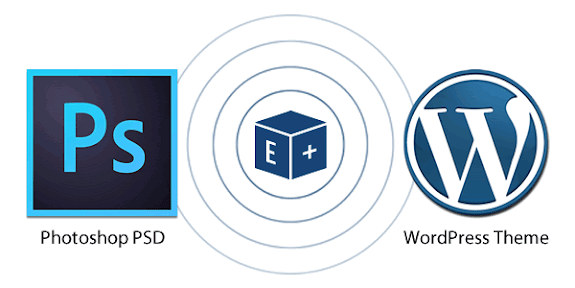Unleashing Your WordPress Website's Full Potential: A Step-by-Step Guide to Customization from Themes to Plugins
WordPress has revolutionized website creation, empowering millions of users to build stunning websites with ease. While WordPress offers a wide range of themes and plugins to get you started, seeking professional WordPress customization services can set you apart from the crowd and unleash your website's full potential. In this comprehensive guide, we will take you through the step-by-step process of customizing your WordPress website with the help of a reputable customization company. From themes to plugins, their expertise will allow you to create a unique and personalized online presence that aligns perfectly with your brand and goals.
Step 1: Choosing the Right Theme
The first step in customizing your WordPress website is selecting the right theme that aligns with your brand and design preferences. WordPress provides a vast collection of both free and premium themes to suit various niches and industries. Take the time to explore different themes, considering factors such as layout, color schemes, typography, and responsiveness. Look for themes that offer customization options, as these will allow you to make changes without diving into code.
Once you have chosen a theme, install and activate it on your WordPress dashboard. Remember that the theme you choose forms the foundation of your website's design, so choose wisely and don't rush this crucial step.
Step 2: Customizing the Theme
Now that you have a theme in place, it's time to dive into customization. Most WordPress themes come with a dedicated customization panel or the WordPress Customizer, which allows you to modify various elements of your website's appearance. You can typically customize colors, fonts, header and footer designs, homepage layouts, and more.
Start by adding your website's logo and adjusting the color scheme to match your brand identity. Next, customize the fonts to ensure they are easy to read and align with your website's tone. Take advantage of the available options to rearrange page elements and add widgets to create a layout that suits your content and user preferences.
Remember, the goal is to create a visually appealing and user-friendly interface, so take your time experimenting with different options until you achieve the desired look.
Step 3: Implementing Custom CSS
While the theme customization options can go a long way, you may have a specific vision that requires additional tweaks. This is where custom CSS comes in handy. Custom CSS allows you to apply your own style rules to override or supplement the default styles of your theme.
If you're not familiar with CSS coding, don't worry. Many WordPress users opt for beginner-friendly plugins like "Simple Custom CSS" that provide an intuitive interface for adding and editing custom CSS rules. With custom CSS, you can fine-tune every aspect of your website's design, from adjusting margins and padding to changing font sizes and colors. The possibilities are virtually limitless.
Step 4: Enhancing Functionality with Plugins
Customizing your website isn't just about appearance; it's also about providing the best user experience and adding valuable features. WordPress plugins are your best friends when it comes to extending the functionality of your website. There are thousands of plugins available for various purposes, from contact forms and social media integrations to e-commerce and search engine optimization (SEO).
Before installing plugins, consider the specific functionalities you want to add to your website. Installing too many unnecessary plugins can slow down your website and cause conflicts. Stick to essential plugins and make sure they come from reputable developers with good reviews and frequent updates.
Once you've chosen your desired plugins, install and activate them from your WordPress dashboard. Most plugins offer settings pages where you can configure their functionality to suit your needs. For example, an SEO plugin may allow you to customize meta tags and descriptions for each page, while a contact form plugin will let you define the fields and email recipients for form submissions.
Step 5: Advanced Customization with Page Builders
If you crave even more control over your website's design and layout, consider using page builders. Page builders are powerful tools that allow you to create custom page layouts without writing a single line of code. They typically operate on a drag-and-drop interface, making it easy to arrange elements and build complex page structures.
Popular page builders like Elementor, Beaver Builder, and Divi offer a wide range of pre-designed templates and widgets, making the customization process efficient and user-friendly. You can customize headers, footers, and individual page sections while having full control over fonts, colors, and spacing.
Step 6: A/B Testing for Optimal Customization
As you continue to customize your website, it's crucial to ensure that the changes you make improve user experience and drive your desired outcomes. A/B testing is a valuable technique that allows you to compare different versions of your website to identify which performs better with users.
A/B testing involves creating two or more versions of a page or element with slight variations and directing traffic equally to each version. By analyzing user behavior, such as click-through rates or conversions, you can determine which version is more effective in achieving your goals. Implementing A/B testing helps you make data-driven decisions and refine your customization efforts for optimal results.
Conclusion
Customizing a WordPress website from themes to plugins is a journey that involves creativity, experimentation, and a deep understanding of your brand and audience. By following this step-by-step guide, you can unleash your website's full potential and create a unique online presence that captivates users and drives success. Remember, customization is an ongoing process, so continuously gather user feedback, analyze performance metrics, and stay up-to-date with the latest design trends and technologies. With dedication and a keen eye for detail, you can elevate your WordPress website to new heights and stand out in the vast digital landscape.







.jpg)
Comments
Post a Comment